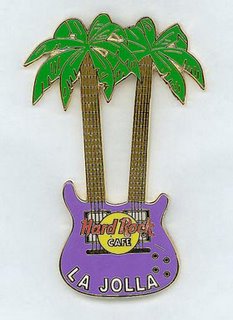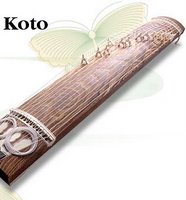Natural effects

Unlike the electric guitar whose sound lends itself to being modified, distorted, and morphed until it is sometimes unrecognizable as a guitar, there’s only so much you can do with an amplified acoustic guitar in terms of effects before you lose its essence as an acoustic instrument (that is, the sound it creates when it’s unplugged). I find that while modulation effects like chorus and flanger can do wonders to fatten up and give dimension to an acoustic, they can also weaken the sound and turn it to mush if too much is put in the mix. I’m no purist, but I believe there’s still no sound like an acoustic guitar’s, which is why it’s my main instrument to begin with.
Having said that, I do like to find ways to change the sound of my acoustic without having to resort to effects. After years of playing I have found ways to make my guitar sound like other instruments using some simple techniques that even beginners can employ and quickly add to their arsenal:
- Pizzicato violin. Mute the strings by placing the edge of your right p
 alm (or left, if you’re left-handed) right on the bridge nut, giving it the classy pizzicato sound a violin makes when it’s plucked instead of bowed (if you don’t know how a pizzicato sounds, give a listen to the third verse of the Glen Frey song “Lovers’ Moon”). This is also good for getting a “power chord” sound when you strum the bass strings.
alm (or left, if you’re left-handed) right on the bridge nut, giving it the classy pizzicato sound a violin makes when it’s plucked instead of bowed (if you don’t know how a pizzicato sounds, give a listen to the third verse of the Glen Frey song “Lovers’ Moon”). This is also good for getting a “power chord” sound when you strum the bass strings. - Snare drum. When you play chords, leave some beats muted by holding and damping the strings with your fretting hand as you continue to strum. This gives the impression of a snare drum, which is especially useful when you are the lone instrumentalist as it adds a percussive sound to the music.
- Bells and chimes. When you damp the strings with your fretting fingers over certain areas of the fingerboard, you get harmonics, a sweet sound that evokes delicate bells and chimes. The strongest harmonics are over the 12th fret, followed by the 5th and 7th frets. There are some harmonics on the 17th and 19th frets but they’re harder to coax out, and they’re practically the same as the harmonics on the 5th and 7th frets. To get the harmonics, place a finger lightly over one or more strings in the aforementioned frets, then release it a fraction of a second after plucking. This takes some practice but the sound is so sweet you’ll never get tired of doing it. Bear in mind that harmonics, done this way, give a limited number of notes, so choose which strings you will do it in (not all six at the same time) and what chord they will go along with. In fact, now that I think about it, this will require an entire blog entry to explain, so watch out for it.
- Drums. Just tap on the soundboard! Different areas of the wood give different sounds: the bottom end gives a bassy sound while the upper portions are more trebly. Also,
 different parts of your hand will give different sounds: use the heel of you palm for bass, the length of your fingers and/or your thumb for toms, and the tips of your fingers, especially when used in rapid succession, for snare. I find it best to use this technique as a highlight or as a fill in between passages, not for any lengthy ad libs. Nuno Bettencourt does this in “More Than Words” before the second verse kicks in.
different parts of your hand will give different sounds: use the heel of you palm for bass, the length of your fingers and/or your thumb for toms, and the tips of your fingers, especially when used in rapid succession, for snare. I find it best to use this technique as a highlight or as a fill in between passages, not for any lengthy ad libs. Nuno Bettencourt does this in “More Than Words” before the second verse kicks in. - Distorted electric guitar. Plugging an acoustic into a distortion box can yield pretty wild sounds – and not of the pleasing variety. Since a distortion does its work by boosting the guitar’s signal, you will have problems with feedback if you’re not careful (and often even if you are). What I do is simply insert a piece of paper between the strings at the bridge end to evoke that distorted sound. It won’t do much to help you play singing leads since the sound is not really boosted up, but for power chords it’s good enough.

- Japanese koto or marimba. Use a pen or stick to strike your strings, bouncing rapidly for that Japanese koto or marimba sound (the rapid bouncing is actually automatic with a pen or stick). It’s easy to do on the high E string, but it takes some practice with the others strings. I don’t use this technique much, though, because it doesn’t really fit in with the kind of music I play.
There are a few other “natural effects” I do with the acoustic guitar that are really part of my “signature” sound, and not to be selfish, I will share these with you in the next blog entry. I reserved them as they are the ones that make people sit up and notice the acoustic guitar player instead of just the singer or (gasp) the “lead guitarist.”




0 Comments:
Post a Comment
<< Home